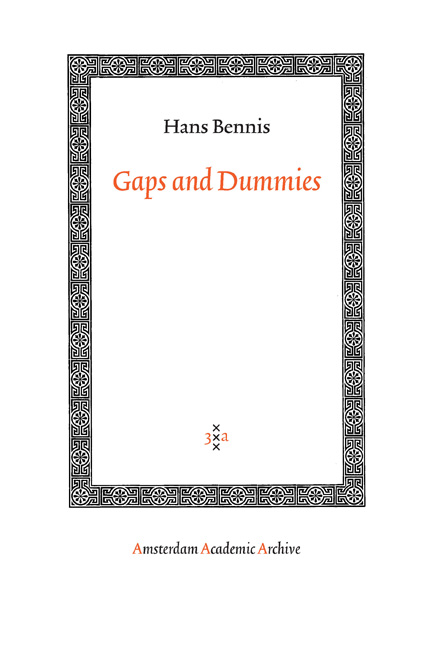2 - Het as a Referential Expression
Published online by Cambridge University Press: 20 January 2021
Summary
Introduction
In this chapter it will be argued that Dutch het is not a dummy pronoun when it functions as the subject of a weather verb, or when it is in construction with an extraposed sentential complement. In the latter structure het may appear in subject and in object position. I shall provide arguments for the correctness hypothesis and discuss some of its implications.[lJ.
We can distinguish two different instances of the dummy pronoun het. Dutch het is similar to English it in this respect. The first instance concerns its use as a subject in construction with a weather verb, as in (1). This construction will be discussed in section 2. The second case involves, wide range of constructions i’ which th, subject QC object does oot seem to have, thematic role but where it is clearly related to , postverbal sentential complement, as in (2).
(1) Het regent
It rains
(2)a.Het schijnt dat Jan ziek is
It seems that John ill is
b.Het is vervelend dat Jan ziek is
It is annoying that John ill is
c.Het wordt beweerd dat Jan ziek is
It is said that John ill is
d.Jan betreurde het dat hij ziek was
John regretted it that he ill was
In addition to the so-called “dummy” use of the pronoun het, it can also be used as a neuter. personal pronoun. In view of what has just been said, it should be clear that I shall argue in favour of an analysis in which the pronoun het is a referential pronoun in all instances. In section 3, it will be argued that the “dummy pronoun” het displays several properties that are characteristic of referential expressions. such as the fact that it may be the antecedent for reflexives. PRO and parasitic gaps. This implies that we need no longer make a distinction between three different uses of one pronominal element, but rather that. given the properties of the pronominal element het, we expect het to occur in different construction types. In section 4. it is demonstrated that an analysis in which dummy het is considered to be a referential expression leads to correct predictions with respect to extraction from sentential complements. In section 5, I shall discuss the occurrence of het as the subject of raising verbs.
- Type
- Chapter
- Information
- Gaps and Dummies , pp. 93 - 170Publisher: Amsterdam University PressPrint publication year: 2005



